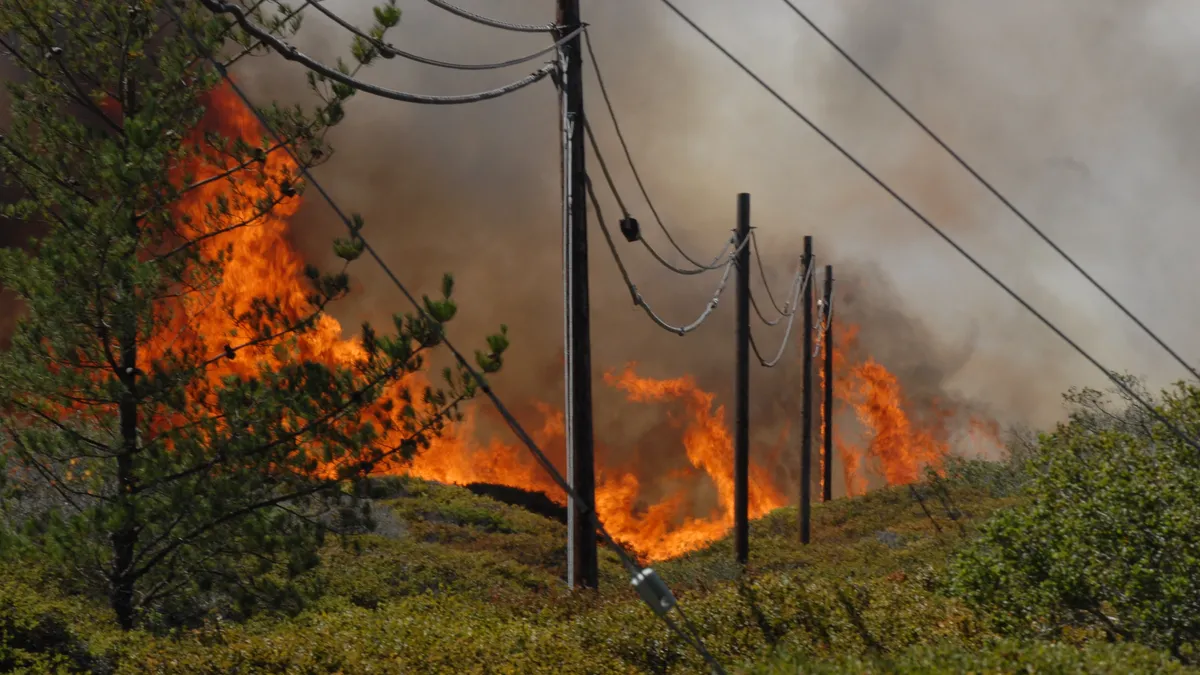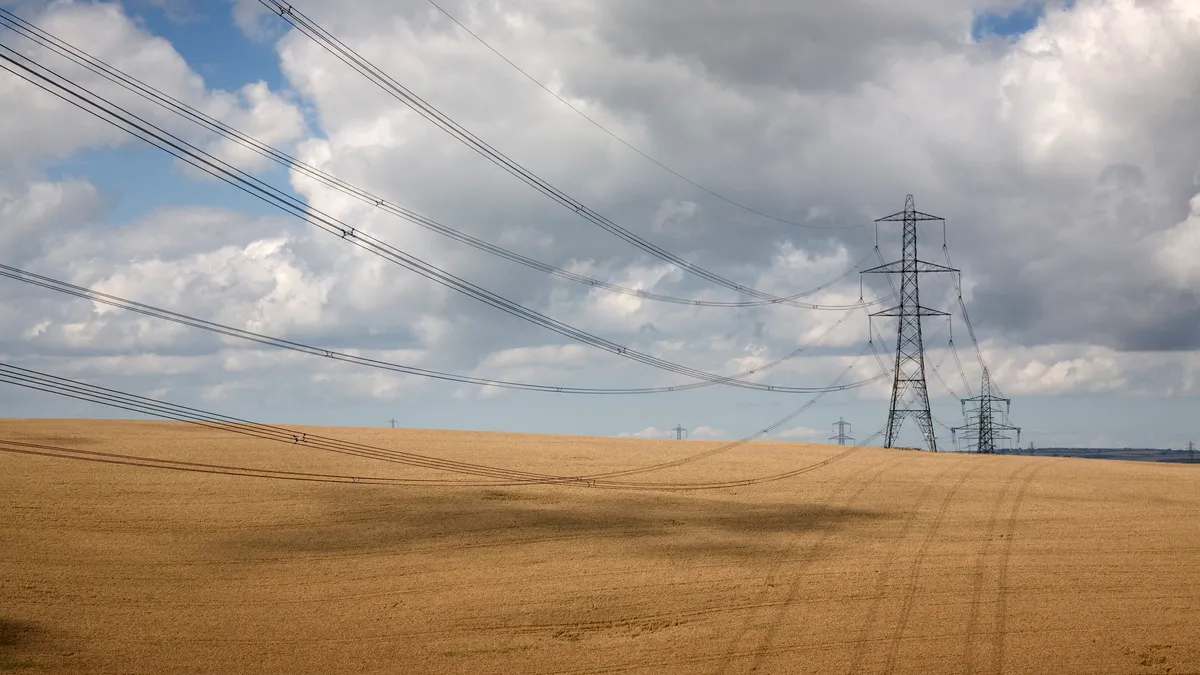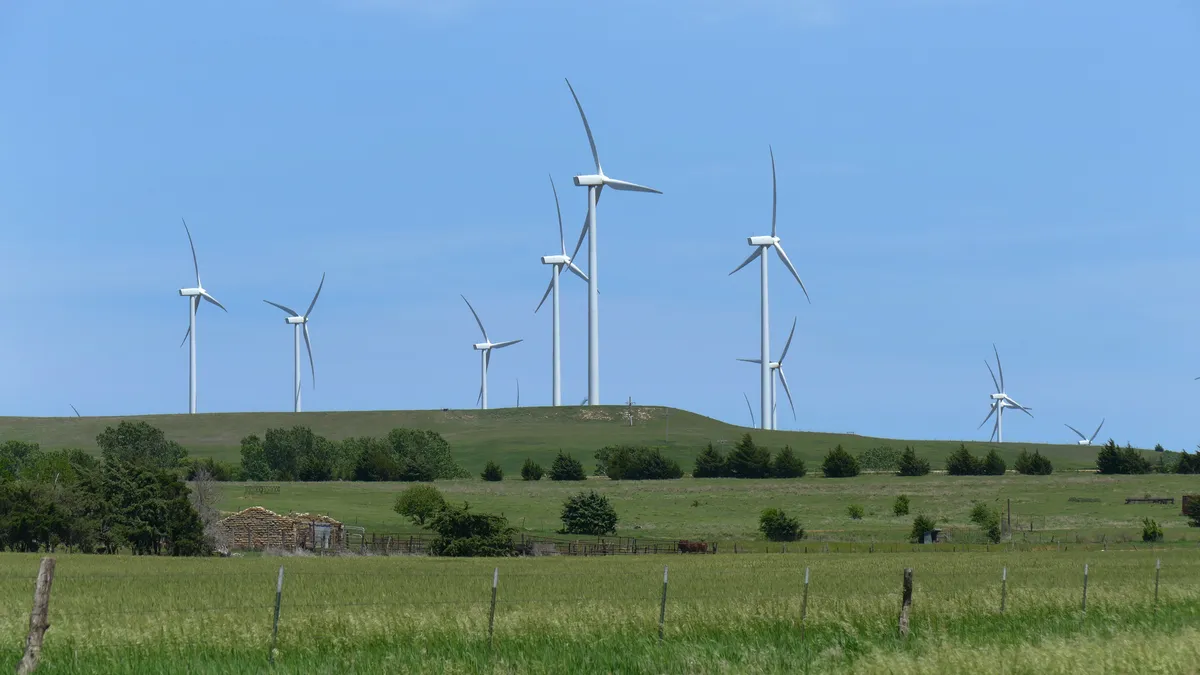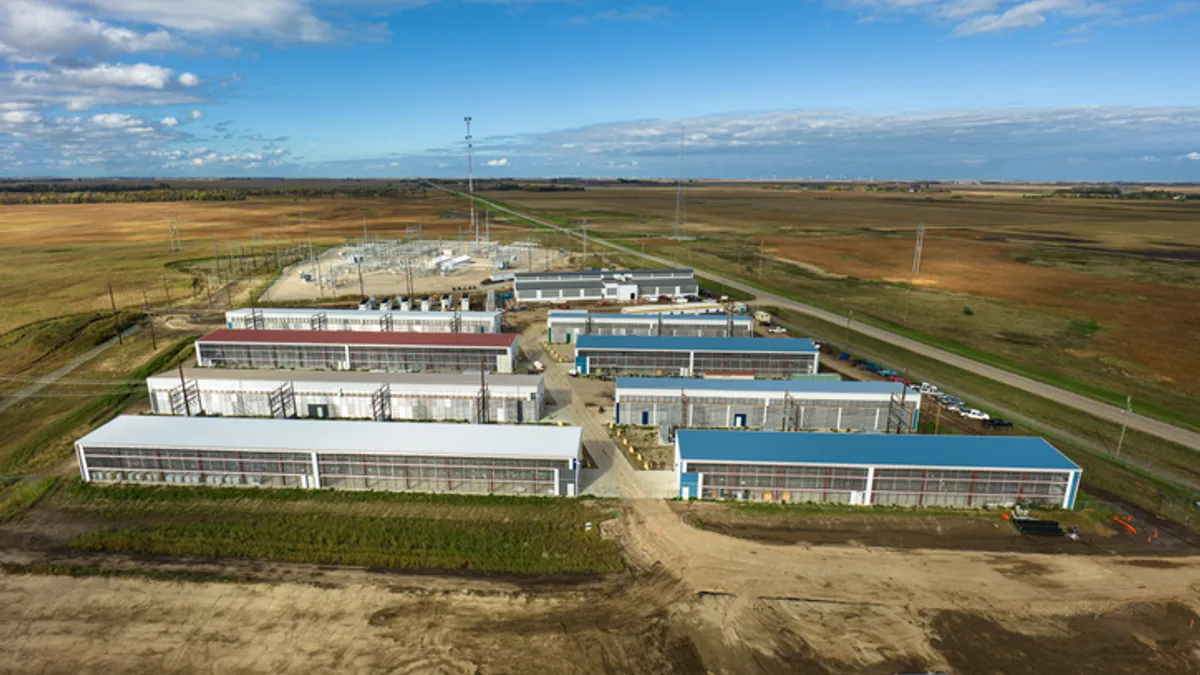The following is a contributed article by Scott Aaronson, vice president of security and preparedness at the Edison Electric Institute.
The only thing more important to America's electric companies than protecting the nation's energy grid is ensuring the safety of our customers and our communities.
National Weather Service modeling in Northern California recently showed high-risk areas, or "red flag warnings," where wind patterns were alarmingly similar to the deadly October 2017 events that resulted in more than 20 fires in Pacific Gas and Electric's (PG&E) service territory. That led to the company's recent decision to use a public safety power shutoff, which, while extraordinary, protected property and saved lives.
With more people living in high-risk areas, we must confront the growing threat of fires and their impacts on people, property, and infrastructure. One suggestion has been to do away with the interconnected energy grid and rely instead on microgrids. As the thinking goes, this would address fire risk by eliminating infrastructure that can be compromised by high winds or other hazards.
To paraphrase H.L. Mencken: For every complex problem, there's a solution that is simple, neat and wrong.
That is not to say that microgrids cannot play a valuable role in supporting a safe, reliable, affordable, clean and secure energy grid. Across the United States, microgrids have been built or are being considered to help solve localized challenges or to provide power for customers that need to exceed 99.9% reliability.
But microgrids are expensive to build, and the ones being built today still are connected to the energy grid because the grid's interconnectedness allows electric companies to leverage a broad set of tools, characteristics and capabilities that enhance resilience in ways that a self-contained microgrid cannot.
This includes the grid's ability to integrate diverse resources, including more and more renewables. There also is benefit from enhanced situational awareness, using the ubiquitous infrastructure to sense anomalies and facilitate response. And, the energy grid provides redundancy, limiting single points of failure and withstanding extraordinary conditions, but also recovering quickly when Mother Nature or malicious actors impact operations.
Having the capability to island off sections of the energy grid during emergency situations is one tool in the toolbox for electric companies. There also are technologies that enable energy grid operators to shut off more targeted segments of the system strategically, or to reroute power and still deliver electricity to communities, while safely de-energizing lines where necessary.
Across the country, electric companies are making substantial investments in the energy grid to make it stronger, smarter, cleaner, more dynamic and more secure for all customers.
Sensors on energy infrastructure are helping to identify dangerous conditions and prevent fires, while enhanced vegetation management on rights-of-way can serve as fire breaks and support access for first responders. Despite all of these investments, there still will be times when electric companies, regulators and public safety officials decide that additional steps need to be taken to prevent the loss of life, property and critical infrastructure.
Investing in new technologies, including microgrids, can help to reduce the frequency of such extreme measures, and also ensure that as few communities as necessary are disrupted. The benefits of microgrids, however, present challenges when not connected to the broader energy grid. Like having a computer network not connected to the internet, microgrids work, but you are limited to local resources only.
While we have seen dramatic improvements in renewable energy, battery storage and energy efficiency, self-sufficient microgrids typically also rely on diesel or natural gas generators to help balance supply and demand. This requires ramping the generators up and down, which puts a lot of wear and tear on the turbines and increases the risk of having to take the unit offline for maintenance or repairs.
When that happens, there may not be alternative generation readily available. Constant ramping also has serious negative impacts on local air quality and carbon dioxide emissions.
These completely detached systems also can be very expensive to build and maintain. The federal government has financed microgrids at critical facilities like military bases, but the cost of building and maintaining these systems would fall to the local communities being served by the system.
Without being connected to the energy grid, customers and microgrid operators would be unable to participate in the markets that often provide equipment owners opportunities to profit from the excess energy they are generating. This includes scenarios where the microgrid operator has excess generation capacity available, as well as individual homeowners with private solar panels. If they are not connected to the energy grid, then neither will have the ability to sell their excess power back to the energy grid.
Developing and investing in advanced technologies are important, but fundamentally, it is these technologies' interconnection with the energy grid that helps to keep electricity prices low for customers, while offering resiliency through the ability to deliver electricity from other sources in the event of localized equipment failure.
There also is the question of who will be responsible for maintaining and repairing the system when problems do arise? While the recent public safety power shutoff was an extreme example, it was remarkable that PG&E was able to inspect more than 25,000 miles of lines and make more than 100 repairs to its energy grid in 48 hours. A smaller system would not have the same surge capacity available during emergencies.
There also may be red flag warning scenarios where even the local distribution system is at risk for damage. In those cases, communities with a microgrid may still choose to deenergize to prevent a catastrophic fire. When all it takes is a single spark, there is zero margin for error.
With the growing risk of wildfires, investments in technologies that enable more finely targeted deenergizing and in sensors that can help detect problems in real-time will be critical to protecting lives and property. Nevertheless, every customer and community must be prepared for scenarios in which they lose power.
Not having electricity always causes hardships, but, with sufficient preparation from electric companies and with individuals taking personal responsibility to prepare, it is a lifesaving tradeoff worth making.




















